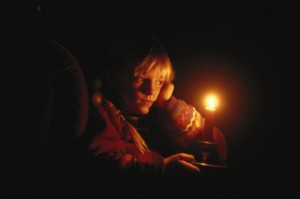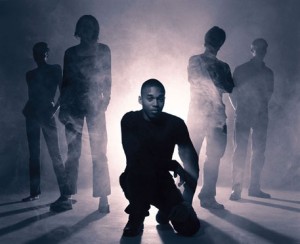Circus of Dreams (Part 6)
By Asher Crispe: November 22, 2012: Category Decoding the Tradition, Inspirations
To Light Up the Night
 Concepts in the Torah tend to come in complementary pairs. In our thinking about the month of Kislev, we find that dream-darkness casts long sociological and psychological shadows. What affects me personally also conditions my species. So if I am cast into the darkness, then we are speaking of the personal unconscious and individual exile. When the people or community dwell in darkness, then we are dealing with the collective unconscious and general state of displacement with the human condition.
Concepts in the Torah tend to come in complementary pairs. In our thinking about the month of Kislev, we find that dream-darkness casts long sociological and psychological shadows. What affects me personally also conditions my species. So if I am cast into the darkness, then we are speaking of the personal unconscious and individual exile. When the people or community dwell in darkness, then we are dealing with the collective unconscious and general state of displacement with the human condition.
Such a pairing usually has the backing of a verse in the Hebraic Bible. In Micha 7:8 we can document the individual aspect for “…though I sit in darkness, God is my light.” The use of the first person singular—’I’ sit in darkness—personalizes the sense of my own inner confusion. My exilic ‘I’ looks to a source of illumination that transcends the self in order to rescue the self from its own unconscious. But why is the spatial orientation of the self in this verse sitting? Psychologically, sitting may be interpreted as the sinking of the self into itself. When I am anchored in my own subjectivity and introverted within my ego, my stature in the world is diminished. My person, no longer fully extended, gets lost within itself. Only a Divine light can pull me out of my saturated self or the density of my being.
The counterpart statement that jumps from the psychological to the sociological can be found in Yeshiyahu/Isaiah 9:1 where: “The people that walked in darkness have seen a great light….” Taking notice of the shift into an address of the collective—’the people’—we diagnose our communal confusion and societal sleep. Perhaps as a people we share a common dream or hope for a synchronized awakening? All of our social ills may be ascribed to our ‘walking’ in the darkness. We lack direction. We are stripped of the tools of navigation and therefore thrust back into virtual political anarchy. The ‘great light’ which we as a people see represents a common experience and shared source of inspiration. In Hebrew, a ‘great light’ is an ohr gadol (אור גדול) which equals 250—the equivalent of the word ner (נר) or candle.
Sometimes sociological problems only require a small innovative idea to transform the darkness of the situation into a rectified state of light. The candle in question has a twofold significance. First, it alludes to the candles of Chanukah which were a literal manifestation of a national triumph over a common enemy. On a symbolic level, these Chanukah candles reflect the overcoming of Greek metaphysics which generally reduces all of reality to the natural world. Transcending nature (where the natural world view is likened to the darkness) is itself a source of illumination. Secondly, the candle evokes the soul of a human being. Our own source experience is forged outside and beyond the natural world before being deposited within the natural world. Our souls in bodies are themselves the ‘beyond nature’ within ‘nature.’ The darkness is the materiality of the physical body (or our social body in the abstract) which must be sparked. Once ignited, the active combustion of the physical fuels the fire of the spiritual. The body can even enhance and nourish the soul just like the material of the candle produces the ephemeral flame.
One of the most essential teachings of the Talmud (Brachot 55b) which states that “all dreams follow after the mouth [that interprets them]” highlights the nature of dreams which are the dreamscape of the natural world. We are accustomed to thinking that there exists a predetermined reality which our investigative efforts simply exposes. However, when the real world dissolves in the dreamland, then the real blurs with the virtual and at best we can speak of ‘possible worlds’ and ‘probable realities.’ From the backseat of passive spectatorship, we knowers move in the active role of drivers who direct reality through the very act of trying to know it. Our participation signals, along the same lines as Niels Bohr’s proclamation about the Quantum realm, that ‘no deep reality exists.’ Our measuring of our world co-creates our world. Without our assistance it has no determinate meaning.
The dream is not merely a psychic episode playing in the home theatre of my mind. Our oneiric adventures paint a picture of the entire universe as a simulation which, when understood as information, may be subject to our subjectivity. Whether we measure our dream-world with some imagining device, or collapse the wave form of an elementary particle in our minds, or just nip and tuck with the semiotic and semantic tools of our mouth, the net effect is a reality which arises through the imposition of interpretation. In more basic terms, the dream has no meaning until I speak of it and the manner in which I spin it (our Samech as a wheel) will influence its actualized meaning. Interpretation concretizes the liquid landscape.
This being the case, all dreams (personal, collective and most especially the meta-dream of the world-reality) should be interpreted by the Cohen. While this is enacted on special occasions when the Cohen blesses the people (which requests that the transcendent aspect of Divinity show His ‘face’ and awaken us within the dream, thereby making known the fundamental ambiguity of the dream and its potential for revision and transformation) with love, it also speaks to the unique property of the soul which is Cohen-like (that of lovingkindness) so that we may arouse this same power of transformation within ourselves and others.
 When the Cohen blesses the people, his hands are raised to form lattices through which he looks upon the congregation. So too the Cohen within us looks upon a world through the extensions of our self (hands) which partially obscures our view. We are always only dealing with partial or incomplete information. Nothing is in full view. The blessing is then said with the mouth speaking through the filter of the hands. We might even imagine that the space enclosed by the thumbs and index fingers connotes a semblance of a circle or the letter Samech (the undifferentiated openness that knows neither a top nor a bottom) and then the mouth (peh) speaks through it. With words issuing through the confident hands, they can be shaped and spun to the extent that they sweeten the reality of the dream and the dream reality.
When the Cohen blesses the people, his hands are raised to form lattices through which he looks upon the congregation. So too the Cohen within us looks upon a world through the extensions of our self (hands) which partially obscures our view. We are always only dealing with partial or incomplete information. Nothing is in full view. The blessing is then said with the mouth speaking through the filter of the hands. We might even imagine that the space enclosed by the thumbs and index fingers connotes a semblance of a circle or the letter Samech (the undifferentiated openness that knows neither a top nor a bottom) and then the mouth (peh) speaks through it. With words issuing through the confident hands, they can be shaped and spun to the extent that they sweeten the reality of the dream and the dream reality.
For Part 7, our reflections on the Priestly Blessing will set the stage for our encounter with the archetypal dream interpreter in the Torah.
http://www.interinclusion.org/inspirations/circus-of-dreams-part-7/
Circus of Dreams (Part 6) ,













;)
;)
;)
;)
;)
;)
;)
;)
;)
;)
